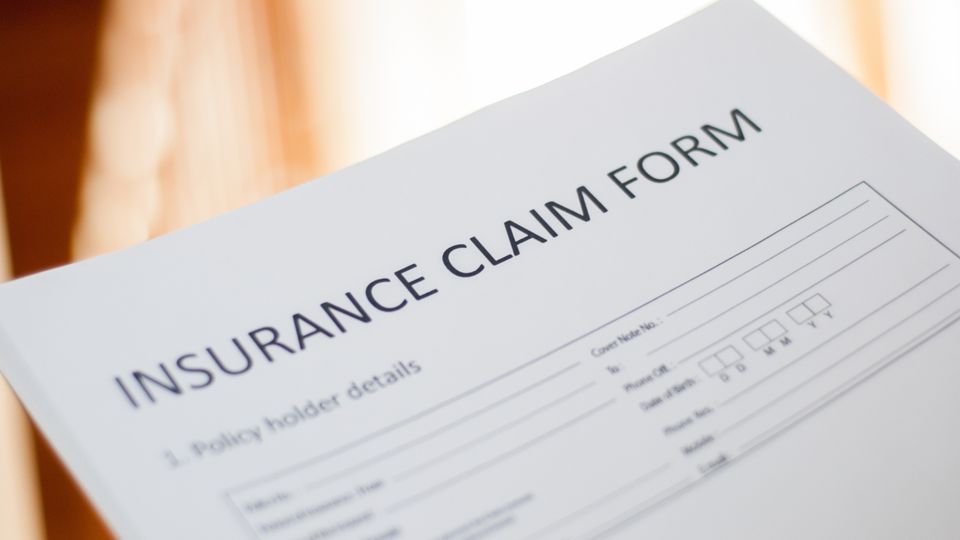

When unexpected roof damage occurs, filing an insurance claim can be daunting. Navigating a roof inspection for insurance claims involves understanding what inspectors look for and how to document your findings. This guide will provide clear steps to help you through the process. From preparing for an inspection to dealing with insurance companies, you'll learn essential tips to ensure your claim is successful.
Why Roof Inspection Matters for Insurance Claims
Roof inspections for insurance are crucial. They determine the extent of damage and potential coverage. By taking the time to conduct a thorough inspection, you lay a strong foundation for your insurance claim. This proactive step helps avoid surprises later in the process.
Insurance companies rely on roof inspections to assess claims. A detailed inspection can reveal issues like leaks, structural damage, and roof hail damage. These findings directly impact your claim's success. A well-documented inspection increases the likelihood of a favorable settlement.
Quick tip: Regular roof inspections can prolong the lifespan of your roof. By identifying issues early, you prevent costly repairs and ensure your roof remains in top condition.
Insurance companies rely on roof inspections to assess claims. A detailed inspection can reveal issues like leaks, structural damage, and roof hail damage. These findings directly impact your claim's success. A well-documented inspection increases the likelihood of a favorable settlement.
Quick tip: Regular roof inspections can prolong the lifespan of your roof. By identifying issues early, you prevent costly repairs and ensure your roof remains in top condition.
Understanding Your Roof's Condition

Before starting the inspection, familiarize yourself with your roof's current state. This includes materials, age, and any previous repairs. Knowing these details helps you identify new damage and strengthens your insurance claim.
Understanding your roof's condition allows you to spot red flags. Look for missing shingles, rusted flashing, or sagging areas. These signs indicate potential problems that might affect your claim.
Additionally, consider external factors like severe weather. Roofs often suffer damage from hail storms or strong wind. Awareness of recent weather events can help you pinpoint damage related to those occurrences.
Did you know? Hail damage may not cause immediate leaks but can lead to future issues. Addressing it promptly can prevent more extensive damage down the line.
Understanding your roof's condition allows you to spot red flags. Look for missing shingles, rusted flashing, or sagging areas. These signs indicate potential problems that might affect your claim.
Additionally, consider external factors like severe weather. Roofs often suffer damage from hail storms or strong wind. Awareness of recent weather events can help you pinpoint damage related to those occurrences.
Did you know? Hail damage may not cause immediate leaks but can lead to future issues. Addressing it promptly can prevent more extensive damage down the line.
Preparing for Your Roof Inspection
Preparation is key to a successful roof inspection for insurance. Review any previous inspection reports or repair records. These documents provide valuable context for the current inspection. They also serve as a reference point when comparing past and present roof conditions.
Additionally, familiarize yourself with your insurance policy. Understand what's covered and any specific requirements for filing a claim. This knowledge empowers you to focus on relevant findings during the inspection.
Did you know? Some insurance policies require roof inspections before they'll cover certain types of damage. Always check your policy's fine print to avoid surprises.
Additionally, familiarize yourself with your insurance policy. Understand what's covered and any specific requirements for filing a claim. This knowledge empowers you to focus on relevant findings during the inspection.
Did you know? Some insurance policies require roof inspections before they'll cover certain types of damage. Always check your policy's fine print to avoid surprises.
What Inspectors Look for in Roof Inspections

Inspectors focus on specific aspects of your roof during an inspection. This includes the roof's overall structure, materials, and signs of damage. Understanding these criteria helps you conduct a thorough inspection and prepare for their assessment.
Structural integrity is a primary concern. Inspectors look for sagging or uneven sections, which can indicate deeper issues. They also check the condition of shingles, tiles, or metal panels for signs of wear or damage.
Another area of focus is the roof's drainage system. Inspectors assess gutters, downspouts, and flashing for proper function. Clogged or damaged components can lead to water damage and impact your claim.
Quick tip: Inspectors appreciate well-organized documentation. Your photos and notes should be labeled clearly to streamline the review process and improve your claim's chances.
Structural integrity is a primary concern. Inspectors look for sagging or uneven sections, which can indicate deeper issues. They also check the condition of shingles, tiles, or metal panels for signs of wear or damage.
Another area of focus is the roof's drainage system. Inspectors assess gutters, downspouts, and flashing for proper function. Clogged or damaged components can lead to water damage and impact your claim.
Quick tip: Inspectors appreciate well-organized documentation. Your photos and notes should be labeled clearly to streamline the review process and improve your claim's chances.
Documenting Roof Damage
Accurate documentation is critical for a successful roof inspection for insurance claim. It provides evidence of damage and supports your claim.
You will need to have a detailed report outlining the findings, including information on the type, location, and extent of damage. It should be specific and concise, using clear language to describe each issue.
Additionally, photos should be attached to your report and correspond with written descriptions. This visual evidence strengthens your case and helps the insurance company assess your roof damage insurance claims more efficiently.
You will need to have a detailed report outlining the findings, including information on the type, location, and extent of damage. It should be specific and concise, using clear language to describe each issue.
Additionally, photos should be attached to your report and correspond with written descriptions. This visual evidence strengthens your case and helps the insurance company assess your roof damage insurance claims more efficiently.
The Role of Drones in Roof Inspections for Insurance

Drone roof inspection technology has revolutionized the process. Drones offer a safe and efficient way to assess roofs without the need for climbing. They capture high-resolution images and videos, providing a comprehensive view of the roof's condition.
Using drones for roof inspections helps identify hard-to-reach areas. Their aerial perspective reveals damage that might be missed from the ground or on the roof. This thorough assessment ensures you don't overlook critical issues.
Insurance companies increasingly accept drone footage as part of claims documentation. High-quality images and videos enhance your claim's credibility and streamline the review process.
Using drones for roof inspections helps identify hard-to-reach areas. Their aerial perspective reveals damage that might be missed from the ground or on the roof. This thorough assessment ensures you don't overlook critical issues.
Insurance companies increasingly accept drone footage as part of claims documentation. High-quality images and videos enhance your claim's credibility and streamline the review process.
Dealing with Insurance Companies
Navigating interactions with your insurance company is crucial for a successful claim. Clear communication and organization are key. Start by contacting your insurer and informing them of the damage.
Submit your detailed report and accompanying photos promptly. This documentation provides the basis for your claim and demonstrates your thoroughness.
Maintain open communication with your insurance adjuster. Be prepared to answer questions and provide additional information as needed. Your proactive approach shows your commitment to resolving the claim efficiently.
Submit your detailed report and accompanying photos promptly. This documentation provides the basis for your claim and demonstrates your thoroughness.
Maintain open communication with your insurance adjuster. Be prepared to answer questions and provide additional information as needed. Your proactive approach shows your commitment to resolving the claim efficiently.
Roof Inspection for Insurance Claim: Common Mistakes to Avoid

Mistakes during the roof inspection for insurance process can jeopardize your claim. Avoid these pitfalls to increase your chances of a successful outcome.
Don't delay the inspection. Prompt action is essential for documenting damage accurately and filing your claim in a timely manner. Waiting risks further damage and weakens your case.
Avoid insufficient documentation. Comprehensive photos and detailed reports are crucial for supporting your claim. Ensure your evidence is thorough and well-organized.
Don't delay the inspection. Prompt action is essential for documenting damage accurately and filing your claim in a timely manner. Waiting risks further damage and weakens your case.
Avoid insufficient documentation. Comprehensive photos and detailed reports are crucial for supporting your claim. Ensure your evidence is thorough and well-organized.
Conclusion
Conducting a roof inspection for insurance claims involves several key steps. From preparing for the inspection to dealing with insurance companies, each phase requires careful attention to detail. By understanding what inspectors look for, documenting findings thoroughly, and avoiding common mistakes, you increase your chances of a successful claim.
Remember, a well-executed roof inspection for insurance not only supports your claim but also helps maintain your roof's integrity. For those seeking further guidance, consider consulting professionals with expertise in roof inspections and insurance claims. Taking these steps ensures you're well-prepared to handle any roofing challenges that come your way.
Remember, a well-executed roof inspection for insurance not only supports your claim but also helps maintain your roof's integrity. For those seeking further guidance, consider consulting professionals with expertise in roof inspections and insurance claims. Taking these steps ensures you're well-prepared to handle any roofing challenges that come your way.
